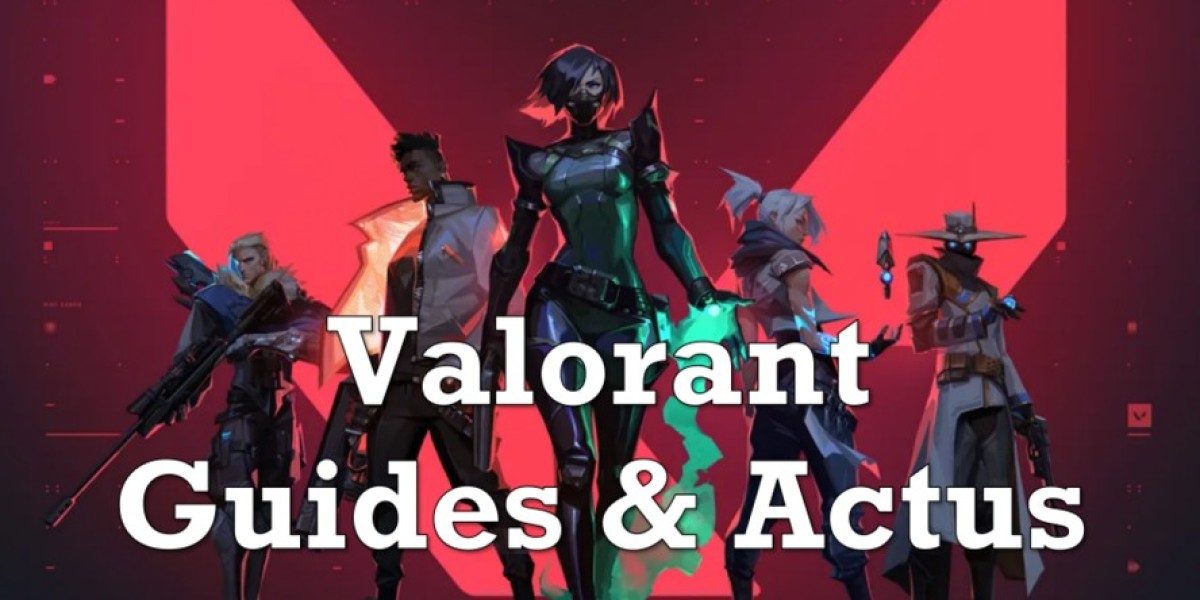The marketing landscape is undergoing a fundamental transformation driven by blockchain technology, decentralization, and digital ownership. As traditional marketing models evolve, Web3 marketing is becoming the cornerstone of how brands engage with audiences. In 2025, this shift is not merely about adopting new tools it’s about reimagining how businesses build trust, loyalty, and transparency in a decentralized world. Web3 marketing emphasizes community, tokenized engagement, NFTs, DAOs, and the power of user-driven ecosystems. This blog explores the top 10 Web3 marketing trends that are shaping the future of digital growth in 2025 and how businesses can leverage them to stay ahead in this rapidly evolving digital frontier.
Decentralized Communities Becoming the Core of Brand Engagement
In 2025, decentralized communities have replaced traditional audiences as the central focus of brand engagement. Unlike Web2 marketing, where engagement happens through centralized platforms like Facebook or Instagram, Web3 empowers users to participate, contribute, and co-own brand experiences. Through DAOs (Decentralized Autonomous Organizations) and tokenized reward systems, users can now directly influence a brand’s decisions, content, and direction. This shift transforms customers into stakeholders, creating deeper loyalty and trust. Brands that focus on community-first models, where participation is incentivized through governance tokens or NFTs, see higher engagement and retention. The power dynamic has shifted brands no longer talk to audiences; they collaborate with them.
Tokenized Loyalty Programs Redefining Customer Retention
Tokenization is revolutionizing loyalty programs in 2025. Traditional loyalty systems based on points and memberships are being replaced by blockchain-powered tokens that hold real-world value. These tokens can be traded, staked, or redeemed across partner ecosystems, giving users full control over their digital rewards. For marketers, tokenized loyalty programs enable transparent tracking and verifiable ownership of rewards. They also foster a sense of belonging by making customers feel like shareholders in the brand’s success. Imagine earning tokens not only for purchases but also for sharing feedback, promoting products, or creating user-generated content. This new model transforms passive consumers into active brand advocates, making loyalty both profitable and participatory.
NFTs Becoming the New Medium for Brand Storytelling
Non-Fungible Tokens (NFTs) have evolved far beyond digital collectibles they are now powerful storytelling tools in Web3 marketing. In 2025, brands use NFTs to deliver unique experiences, commemorate milestones, and represent membership or identity. From limited-edition art drops to branded NFT tickets and virtual fashion items, NFTs allow companies to blend creativity with ownership. They create emotional connections by giving fans tangible digital assets tied to brand narratives. Luxury brands, for instance, use NFTs to authenticate products and reward customers with exclusive content. Meanwhile, artists and creators collaborate with companies to design NFT-based campaigns that merge entertainment, art, and commerce. This trend showcases how NFTs redefine digital storytelling by turning experiences into collectible assets.
AI-Powered Personalization Transforming Web3 Campaigns
Artificial intelligence has seamlessly integrated with blockchain to deliver hyper-personalized experiences in 2025. AI analyzes on-chain and off-chain user behavior to curate personalized offers, product recommendations, and NFT drops. With privacy-preserving technologies like zero-knowledge proofs, users can enjoy tailored experiences without compromising their data. This balance between personalization and privacy is one of the biggest breakthroughs in Web3 marketing. AI-driven tools also help automate influencer collaborations, optimize community engagement, and predict market trends based on blockchain analytics. The fusion of AI and Web3 makes marketing more data-informed, decentralized, and user-centric shaping the next evolution of intelligent digital advertising.
Influencer DAOs and Decentralized Creator Economies
The rise of Influencer DAOs is reshaping creator marketing in 2025. Instead of relying on centralized agencies or brand deals, creators now form decentralized autonomous organizations where they co-manage sponsorships, revenue, and creative direction. These DAOs enable transparent collaborations between influencers and brands through smart contracts. Influencers are rewarded with governance tokens, allowing them to vote on campaign strategies and share profits equitably. This decentralized model ensures fairness, transparency, and inclusivity in the creator economy. For marketers, partnering with Influencer DAOs means accessing communities of engaged, authentic creators who can amplify brand messages organically. The era of centralized influencer gatekeeping is over 2025 marks the dawn of decentralized creative collaboration.
Gamified Marketing and Play-to-Earn Engagement Models
Gamification continues to be one of the most effective ways to drive engagement, but in 2025, it has been supercharged by Web3 principles. Play-to-Earn (P2E) and Engage-to-Earn (E2E) models allow users to earn crypto or NFTs for participating in marketing activities. For example, users might complete quizzes, share content, or participate in metaverse events to earn tokenized rewards. This interactive approach transforms marketing from a passive experience into an active economy. Brands gamify everything from loyalty systems to referral programs, making participation enjoyable and profitable. Web3 gamification bridges entertainment and economics, proving that fun and financial incentives can coexist to build long-term user engagement.
Metaverse Experiences Becoming a Mainstream Marketing Channel
By 2025, the metaverse has become a standard marketing arena rather than a futuristic concept. Brands now create immersive experiences in virtual worlds to engage audiences more interactively. Virtual stores, NFT galleries, and live events in 3D spaces allow users to interact with products and communities in real time. Companies host digital concerts, metaverse fashion shows, and product launches that transcend geographical boundaries. With advancements in AR and VR, users can experience brand interactions that feel tangible and emotional. The metaverse allows marketers to break free from traditional ad formats, offering immersive storytelling that blurs the lines between reality and digital imagination. Web3 ensures these experiences are decentralized and user-owned, making the metaverse a vital pillar of marketing in 2025.
Data Ownership and Privacy-Centric Marketing Models
Data privacy is no longer just a compliance issue—it’s a competitive advantage. In 2025, privacy-centric marketing models have become essential due to global regulatory changes and consumer awareness. Web3’s decentralized infrastructure enables users to control their data through self-sovereign identities (SSIs). Brands now request permission to access data instead of harvesting it through third-party cookies. This consent-driven approach fosters transparency and trust. Marketers can build personalized experiences using verified user data stored securely on blockchain networks. Projects that prioritize privacy and transparency stand out as trustworthy, appealing to the growing number of users who value ethical digital interactions. The era of “surveillance capitalism” is ending, replaced by a transparent, user-first model of digital engagement.
Cross-Chain Marketing and Interoperable Ecosystems
The Web3 ecosystem in 2025 is no longer fragmented by blockchain silos. Cross-chain marketing enables seamless collaboration across networks like Ethereum, Solana, Avalanche, and Polygon. This interoperability allows brands to reach wider audiences without limiting themselves to a single blockchain community. Cross-chain campaigns facilitate token swaps, NFT transfers, and reward systems that operate across multiple ecosystems. For marketers, this means a broader reach, increased liquidity, and diversified community engagement. Users benefit from unified experiences that don’t require switching wallets or networks. As blockchain bridges and interoperability protocols mature, cross-chain marketing becomes an essential strategy for Web3 brands aiming for scalability and inclusivity.
Decentralized Advertising Platforms Revolutionizing Ad Transparency
Decentralized advertising platforms are dismantling the opaque nature of Web2 advertising. In 2025, blockchain-based ad networks ensure full transparency in ad spending, engagement tracking, and revenue distribution. Smart contracts automate payments to publishers and creators based on verified interactions, eliminating fraud and middlemen. Users also benefit by earning tokens for viewing ads, creating a fair value exchange model. These decentralized ad systems provide accurate performance metrics and verifiable impressions, helping brands optimize campaigns with confidence. For the first time, both advertisers and consumers can trust that digital marketing interactions are authentic, measurable, and mutually beneficial. This revolution marks a new era of fairness and accountability in digital advertising.
DAO-Led Brand Governance and Community-Driven Decision Making
Decentralized Autonomous Organizations (DAOs) have extended beyond governance into the realm of brand management. In 2025, many Web3 brands allow their communities to vote on marketing campaigns, partnerships, and product updates. DAO-led governance introduces transparency, inclusivity, and collective ownership. For example, a token-holding community might vote on which influencer collaborations to pursue or which charitable cause to support. This democratization of decision-making ensures that marketing strategies align with the community’s values and interests. DAO-led marketing fosters a sense of co-creation that transforms customers into active brand stakeholders. As this model grows, centralized corporate control gives way to shared creativity, driving long-term trust and loyalty.
AI Agents and Automated Marketing Workflows
Automation through AI agents is another major Web3 marketing trend in 2025. These AI-driven bots perform decentralized marketing tasks ranging from community moderation to NFT drops and personalized campaign delivery. Unlike centralized marketing automation tools, AI agents operate on-chain and interact with decentralized protocols directly. They analyze blockchain data to identify top community contributors, optimize ad spending, and predict user engagement trends. This automation not only saves time and cost but also ensures transparency and efficiency. In the world of 2025, marketers rely on AI agents to create dynamic, self-sustaining ecosystems that constantly adapt to real-time user behavior. The integration of AI with decentralized technologies pushes Web3 marketing into a new era of intelligent automation.
Sustainability and Green Web3 Marketing Initiatives
Sustainability is a defining feature of modern marketing, and Web3 is embracing this responsibility in 2025. With growing concerns about blockchain’s environmental impact, brands now prioritize eco-friendly practices. Carbon-neutral NFTs, green proof-of-stake networks, and energy-efficient ad platforms are becoming the new standard. Sustainability-driven projects attract conscious consumers who value ethical innovation. Web3 marketing campaigns now include transparent reports on carbon offsets and environmental contributions, allowing users to verify impact directly on the blockchain. This trend reflects a broader shift towards responsible marketing, where profit, innovation, and planet coexist harmoniously. Sustainable marketing not only strengthens brand reputation but also futureproofs businesses in a world increasingly focused on ecological accountability.
Educational Marketing and Onboarding the Next Billion Users
Web3 technology is still in its growth phase, and education remains critical for adoption. In 2025, brands are investing heavily in educational marketing campaigns to onboard non-crypto users. Interactive tutorials, learn-to-earn programs, and NFT-based certifications make learning both rewarding and engaging. Companies use gamified educational content to simplify complex concepts like blockchain wallets, DAOs, and DeFi. This not only builds brand trust but also expands the market for decentralized products. By empowering users with knowledge, brands position themselves as leaders in the Web3 revolution. Educational marketing thus becomes a strategic tool for growth and inclusion in the decentralized future.
Integration of Real-World Assets (RWA) in Web3 Campaigns
Tokenization of real-world assets (RWA) is merging the physical and digital economies, and it’s becoming a key marketing trend in 2025. Brands are using blockchain to tokenize luxury goods, real estate, and collectibles, offering fractional ownership opportunities. Web3 marketers leverage RWAs to build trust and tangibility around digital experiences. For instance, a fashion brand might release an NFT collection tied to physical apparel, allowing holders to redeem real items. This fusion of real and digital assets enhances customer engagement by blending scarcity, ownership, and authenticity. The RWA trend showcases how Web3 marketing bridges traditional commerce and decentralized innovation, creating hybrid experiences that appeal to both crypto-native and mainstream audiences.
Personalized NFT Memberships and Exclusive Access Programs
NFT-based memberships are replacing traditional subscriptions in 2025. Brands issue NFTs that grant holders exclusive access to premium content, events, or loyalty perks. These NFTs can be traded, resold, or upgraded, allowing dynamic engagement. For marketers, NFT memberships offer traceability and lifetime customer interaction, while users enjoy the benefit of true ownership. Imagine owning an NFT pass that gives you early access to a metaverse concert, private Discord channels, or brand governance rights. These tokenized memberships not only deepen customer relationships but also introduce a new economy of exclusivity and reward-based interaction that traditional memberships cannot replicate.
The Rise of Web3 Analytics and Data Transparency Tools
The decentralized web demands new ways to measure success, and Web3 analytics tools are leading this transformation. In 2025, blockchain-based analytics platforms allow marketers to track wallet behavior, NFT activity, and community growth without infringing on privacy. These tools use on-chain data to deliver accurate insights about engagement, token distribution, and campaign performance. Web3 analytics also introduce new KPIs such as “community participation rate” and “token velocity,” offering deeper perspectives into user behavior. With transparent data accessible to everyone, brands and communities can collaborate on informed decision-making. Data integrity becomes a public asset rather than a corporate secret, reinforcing trust and accountability in marketing.
Conclusion
The evolution of Web3 marketing in 2025 marks a seismic shift from centralized control to decentralized collaboration. Brands are no longer just storytellers they are ecosystem builders, empowering users through tokenization, community ownership, and transparent engagement. From AI-powered personalization and NFT storytelling to DAO governance and privacy-centric models, each trend reshapes how digital relationships function. The future of marketing lies in participation, authenticity, and decentralization. As blockchain, AI, and metaverse technologies continue to mature, businesses that embrace these Web3 marketing trends will lead the charge toward a more inclusive, ethical, and innovative digital economy.








